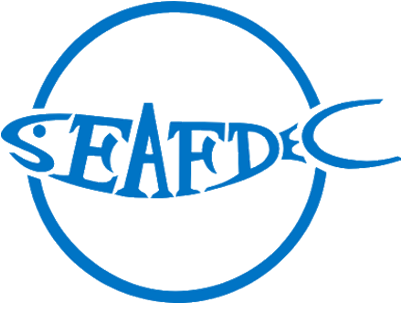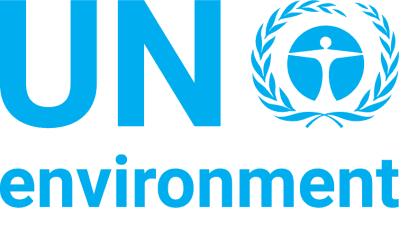Background & Situation Menu
Status and Trends in Fisheries and their Habitats Threats, root causes and barrier analysis Institutional, sectoral and policy context Stakeholder mapping and analysis Baseline analysis and gaps Known Areas of Critical Significance to the Life-Cycles of Fisheries Resources Priority Fisheries Refugia Areas




Establishment of Fisheries Refugia in Indonesia:
Background and Situation Analysis to Support
Threats, root causes and barrier analysis
Global significance
The South China Sea is a global center of shallow-water marine biological diversity, supporting a significant world fishery that is important to the food security of, and as a source of export income for, Southeast Asian countries. Landings from this area contribute approximately 10 percent of reported global fisheries production per annum and make significant contributions to the economies of countries bordering the South China Sea. As noted above, fisheries from the Indonesian waters of South China make significant contributions to this reported production. In the case of Indonesia however, the majority of fisheries are small-scale in nature, and fish are landed in a large number of decentralized locations for distribution through complex marketing networks at the community level. As consequence estimates of fisheries production are considered to be gross underestimates and do not adequately reflect the importance of the artisanal or subsistence production to the fisheries sector as a whole.
The decadal rates of decline in the total area of critical habitats such as seagrass, coral reefs, and mangroves are currently estimated at 30%, 16%, and 16% respectively. Fishing contributes to the loss and degradation of seagrass and coral reefs habitats and national level activities of this project in Indonesia will make a significant contribution to the enhancement of the scientific, institutional, and policy basis required to reduce the rates of loss of globally significant habitats and biodiversity due to fishing. This is considered important because of the potential global fisheries benefits associated with effective fisheries and habitat management at the local level, which is particularly important in the case of Indonesia due to the continuing importance of fisheries to food security, and maintenance of livelihoods. Similarly, given the limited integration of the work of fisheries and environment ministries observed in Indonesia and other parts of Southeast Asia, the establishment and operation of fisheries refugia in Indonesia provide an opportunity to for learning from a regional fishery sector-led initiative to collaborate with the environment sector on integrating fisheries and coastal habitat management.
1.3 Threats, root causes and barrier analysis
1.3.1 Threats
National technical and community consultative processes in Indonesia worked to identify key threats to fish stock and critical habitat linkages. For example at Belitung Island, efforts to conserve and rehabilitate coral reefs so as to support their contribution to sustainable livelihoods in the Bangka-Belitung Islands have been compromised by the prevalence of destructive fishing practices, including the use of explosives, fish traps, Muro Ami, and other similar methods. Similarly at East Bintan-Trikora, activities to develop and implement a management plan for the sustainable use of regionally significant seagrass area and associated resources have been impacted upon by illegal trawl fishing over sensitive nearshore soft-bottom habitats.
Threats to critical habitats: Of the dominant coastal habitats, seagrass and coral reef habitats are among the most threatened in Indonesia. Key anthropogenic threats to seagrass habitats on the South China Sea coast of Indonesia have been ranked from most to least significant as follows: destructive fishing such as pushnets and trawls, coastal construction, sedimentation from coastal development, nutrients, wastewater effluent, and overfishing. Anthropogenic threats to coral reefs have been ranked in order of significance as over-fishing, destructive fishing, sedimentation, pollution (eutrophication), unsustainable tourism and coastal development. Key threats to mangroves include chronic pollution for shrimp and fish farm effluent; conversion of land for industrial purposes; and cutting of timber for charcoal production. Natural threats have been identified as sea-level rise and episodic threats, including tsunamis and typhoons.
Key threats from fisheries have been categorized by the National Fisheries Committee in Indonesia as:
The twin problems of over-capacity and over-exploitation;
Use of destructive and/or unsustainable fishing gear and practices;
Pollution from fish processing facilities and small fishing vessels;
Habitat destruction and pollution due to fish and shrimp farming; and
Illegal fishing
The twin problems of over-capacity and over-exploitation: Over-capacity in commercial and small-scale fisheries, combined with the problem of over-exploitation, are enduring issues facing regional fisheries. The impacts of over-capitalization and over-exploitation are magnified by the use of subsidies and the dependence of coastal communities on fish resources for income, as well as food and nutritional security. Most areas of the South China Sea coast of Indonesia are characterized by a rapid increase in the number of fishing vessels and total engine capacity (hp), and although there has been a general corresponding increase in landings, catch per unit of effort (CPUE) has declined significantly. Recent interviews with fisherfolk suggest significant reductions in yields. Rapid growth in the number of high-powered boats continues to place heavy pressure on marine resources, especially in coastal, and the subsequent diminishing returns on investment in fishing is believed to be driving the increased occurrence of destructive fishing events. This, coupled with a lack of alternative livelihoods, is thought to be the key reason why both small-scale and commercial fishers are resorting to illegal and destructive fishing practices, including blast-fishing and the use of fish poisons (cyanide) in the area. Effective management of over-capitalization and over-exploitation of fisheries resources has been identified as an important element of achieving the desired outcomes for the management of fisheries refugia and will require effective linkage with broader efforts to curb high and increasing levels of fishing pressure in Indonesia.
The use of destructive and/or unsustainable fishing gear and practices: This issue is prevalent across a range of habitat types and regions of Indonesia’s South China Sea coast. As noted above, the Bangka-Belitung and East Bintan-Trikora areas have been identified as hotspots for the use of destructive and/or unsustainable fishing gear and practice, representing a key threat to critical fisheries habitats. Examples include:
Inshore trawl fishing causes habitat impacts and selectivity issues. Catches in these gear types from inshore waters are largely composed of juveniles, and at high fishing effort levels are thought to contribute to growth over-fishing in the area. Such a situation hinders fisheries management efforts which largely focus on the development of sustainable livelihoods, and is a key threat in most inshore waters of Indonesia’s coast and is responsible for the take juveniles of the multiple economically important species.
Digging and gleaning of reef flats, seagrass beds and mangrove forests is an area of concern at each of the sites identified as being of importance to the life-cycle of fished species in Indonesia. Growing demand for seafood in local markets has resulted in a marked increase over recent years in the number of people digging for gastropods and crustaceans in the seagrass beds, leading to damage to seagrass plants, de-stabilization of sediments (and subsequent erosion), and the over-exploitation of benthic organisms. Intensive digging and grazing in some mangrove areas are considered to be contributing to the occurrence of dwarf, low-density mangrove stands at several sites due to disturbance of mangrove roots and seedlings.
Blast fishing, poisons, and unselective fishing gears/practices is a well-known and documented threat to fisheries and habitats in many areas of Indonesia, particularly in coral reef environs of the Bangka-Belitung group. The effects of blasting on the physical structure of coral communities are of particular concern, and the occurrence of blast fishing “craters” on heavily blasted reefs is likely to have a major impact on coral reef-associated fish assemblages. Non-selective fishing gears are utilized in most fished coral reef areas and there is a growing need to minimize the impacts of such practices on critical habitats necessitates the development of best practices in the management of these problems.
Pollution from fish processing facilities and small fishing vessels:
While this issue is well known at the community level, little action has been initiated to address this in Indonesia. Seagrass and nearshore coral reef habitats are particularly threatened by pollution from small fishing vessels and fish processing facilities, particularly in the intensively used shallow embayments of Riau. While volumes and contaminant loadings of wastewater discharges from fish processing facilities are typically unknown, it is believed to be contributing to increased biological oxygen demand and nutrient concentrations in the coastal water areas. This issue is compounded by the discharge of solid wastes generated by fishing communities into areas of coral reef and seagrass. The discharge of oils, both hydrocarbons and fish oils, from small fishing vessels is also common and is potentially a problem across all priority fisheries refugia sites in Indonesia due to the widespread nature of the small-scale fishing sector, although it is recognized that the local significance of this problem will depend on oceanographic processes at the site-level.
Habitat destruction and pollution due to fish and shrimp farming:
While mangroves are not as threatened by reclamation for fish and aquaculture farming in Indonesia as they were in recent decades, chronic pollution from farm effluent has been identified as a key threat to mangroves. Reclamation for industrial development and coastal construction is a persistent threat.
Illegal, Unregulated, and Unreported fishing:
Particularly the use of the illegal and destructive fishing gear is common in many areas of the selected sites for the establishment and operation of fisheries refugia in Indonesia. The illegal encroachment of foreign fishing vessels into national waters and the conduct of large commercial fishing operations in inshore areas set aside for small-scale fishers are common throughout the region. However, the illegal fishing problem is complicated by poor definitions of “illegal” fishing gear and operations in fisheries law, low-level community awareness of the effects of unsustainable fisheries, and minimal resources for monitoring, control, and surveillance (MCS). While this issue is being addressed by broader regional programs operated by FAO and SEAFDEC, local application of regional guidance on IUU management in the establishment and operation of refugia sites has been identified as a priority in Indonesia.
1.3.2 Root causes
The initial Transboundary Diagnostic Analysis conducted for the South China Sea marine basin suggested that the root cause of coastal environmental degradation was the present density and growth of coastal populations. A total of 270 million people, or 5 percent of the world’s population, live in the coastal sub-regions of the five countries. The population is concentrated in 93 cities with over 100,000 inhabitants with an indicative trend of doubling of populations in 32 years. Coastal tourism, increasing fisheries development, and oil exploration and exploitation, are among the major economic ‘pull factors’ causing internal migration from poorly developed inland areas to the coast in Indonesia.
As a result of the abovementioned scenario, fisheries are critically important from the perspectives of food security and export earnings in Indonesia. These fisheries are characterized by high levels of fishing effort from the small-scale sector. Accordingly, all inshore waters of the South China Sea basin are subject to intense fishing pressure. Growing global demand for fisheries products, coupled with strong coastal community dependence on fisheries, is driving continued increases in fishing capacity and effort. The obvious impediment to the reduction of inshore fishing effort is that small-scale operators are often entirely dependent on fish for income, food, and well-being, and this has resulted in the situation of stocks of nearly almost all important species being fully-fished or overexploited. Consequently, the investment of time and household expenditure on fuel for fishing has increased in coastal communities attempting to secure adequate dietary nutrition and income from fishing.
The situation of high small-scale fishing pressure and declining fisheries resources has contributed to the adoption of unsustainable fishing methods to maintain catch and increase incomes in the short-term. As noted in section 1.3.1 above, these include the use of destructive fishing gear and practices, such as the operation of demersal trawls and push nets in seagrass areas, and the detonation of explosives and release of fish poisons in coral reef areas. Small-scale inshore fishing pressure has therefore been identified as a significant cause of the degradation and loss of coastal habitats in the Philippine waters of the South China Sea. Conversely, while action aimed at reducing the rate of loss of coastal habitats has been implemented in the South China Sea waters of Indonesia, the rate of loss of such habitats remains high, raising serious concerns for the long-term sustainability of small-scale fisheries in the region.
With fish production is intrinsically linked to the quality and area of habitats and the heightened dependence of coastal communities on fish, a need exists in Indonesia to improve the integration of fish habitat considerations and fisheries management in the region. The dilemma for the fisheries and environment sectors is that conservation of habitat does not necessarily result in increased fish stocks while lowering fishing effort does not necessarily result in the improvement of habitat. Therefore, given the complexity of the key threats to fish stocks, fish habitats, and associated biodiversity in Southeast Asia, it is imperative that mechanisms for effective cross-sectoral consultation and coordination be established, particularly in terms of the identification and designation of priority ‘places’ for management.
In terms of environmental governance and management, the environment and fisheries are treated as separate sectors for planning and management purposes leading to:
Overlapping or conflicting mandates between different ministries, as in the case of fisheries and environment for example, where internal mechanisms for managing the impacts of fishing practices on habitats and the physical environment do not exist;
Problems related to effective control of environmental degradation resulting from land-based pollution where the interface between the industrial and environmental sectors is not well developed; and
Lack of adequate consideration of the consequence of environmental degradation and habitat loss due to ineffective means of valuing environmental goods and services, and where they exist, a failure to use such values in social cost-benefit analysis.
1.3.3 Barriers
Indonesia’s National Committee on Fish Stocks Assessment has identified a need for national action to strengthen the integration of fisheries and habitat management along the South China Sea coast of Indonesia, although noted that such an initiative would be constrained by the following factors: (1) limited experience in national fisheries and environment departments and ministries with respect to the implementation of integrated fisheries and habitat management approaches; (2) limited information regarding fish life-cycles and critical habitat linkages and the role that coastal habitats play in sustaining fisheries; and (3) the low level of community acceptance of ‘protected’ area approaches to marine management in Indonesia.
To address these barriers, it has been identified that the project will:
build the capacity of fisheries and environment departments and ministries in Indonesia to engage in meaningful dialogue regarding how broader multiple-use planning can best contribute to improving the state of fisheries habitat management;
improve understanding among stakeholders, including fisherfolk, scientists, policymakers, and fisheries managers, of habitat and fishery linkages as a basis for integrated fisheries and habitat management; and
enhance and sustain the participation of local fishing communities and the private sector in management interventions for improved fisheries habitat management and biodiversity conservation through a focus on sustainable use rather than the prohibition of fishing.
Additionally, project activities in Indonesia will address the barriers to integration by drawing on fisheries management concepts that are easily understood by fishing communities and emphasize sustainable use rather than simply the prohibition of fishing. The latter is considered detrimental to efforts to harness community support for area-based approaches to fisheries management in Indonesia.